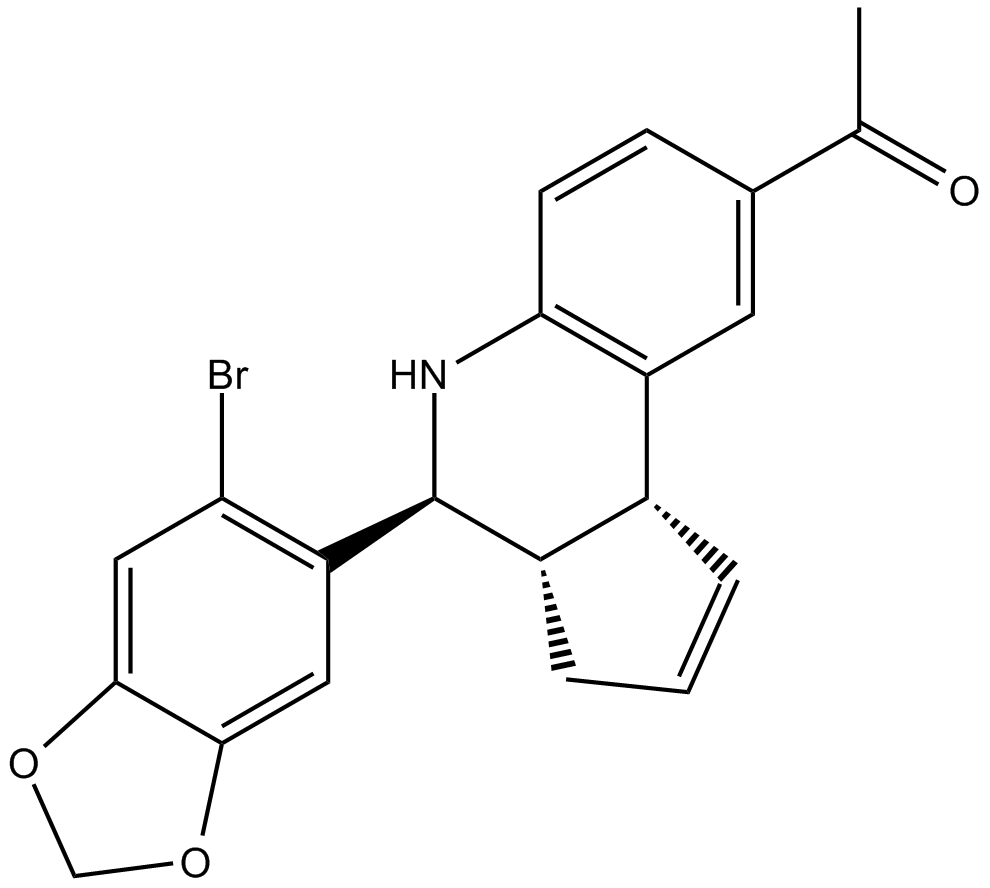G-1 |
| Catalog No.GC12766 |
G-1 is a selective and potent agonist of GPR30 with EC50 value about 2 nM.
Products are for research use only. Not for human use. We do not sell to patients.

Cas No.: 881639-98-1
Sample solution is provided at 25 µL, 10mM.
G-1 is a selective and potent agonist of GPR30 with EC50 value about 2 nM [1].
G-1 treatment (10-5 and 10-4 M) for 48 and 72 h significantly decreased A549 cell proliferation, at 72 h, the IC50 value for G-1 was calculated to be 2×10-5 M [2]. G-1 treatment at a concentration of 2×10-5 M had no significant effect on CAT activity but led to a significant increase in SOD activity, GPx activity and NO level [2]. G-1 inhibited TNF-α and IL-6 release on primary human macrophages derived from monocytes treated with GM-CSF over 6 days. The agonist inhibited the induction of both cytokines with IC50 values of 209 nM and 317 nM, respectively [3]. G-1 was also able to inhibit LPS induction of TNF-α in a mouse macrophage cell line, RAW 264.7 [3].
G-1 (50 mg/kg/day, 21 days) administration significantly reduced the severity of actively induced experimental allergic encephalomyelitis (EAE). G-1 treatment reduced the qualitative degree of inflammation in the lumbar spinal cord. G-1 treatment reduced the fraction of CNS-infiltrating macrophages (CD45hiCD11b+) in three individually analyzed mice [3]. G-1 could exert protective effects on motoneurons. The intraperitoneal injection of the GPR30 agonist G-1 for 14 days induces neuroprotective effects similar with the same dose of E2 [4].
References:
[1]. Bologa C G, Revankar C M, Young S M, et al. Virtual and biomolecular screening converge on a selective agonist for GPR30[J]. Nature chemical biology, 2006, 2(4): 207-212.
[2]. Kurt A H, Çelik A, Kelleci B M. Oxidative/antioxidative enzyme-mediated antiproliferative and proapoptotic effects of the GPER1 agonist G-1 on lung cancer cells[J]. Oncology Letters, 2015, 10(5): 3177-3182.
[3]. Blasko E, Haskell C A, Leung S, et al. Beneficial role of the GPR30 agonist G-1 in an animal model of multiple sclerosis[J]. Journal of neuroimmunology, 2009, 214(1-2): 67-77.
[4]. Cheng Q, Meng J, Wang X, et al. G-1 exerts neuroprotective effects through G protein-coupled estrogen receptor 1 following spinal cord injury in mice[J]. Bioscience Reports, 2016, 36(4).
Average Rating: 5 (Based on Reviews and 37 reference(s) in Google Scholar.)
GLPBIO products are for RESEARCH USE ONLY. Please make sure your review or question is research based.
Required fields are marked with *




















